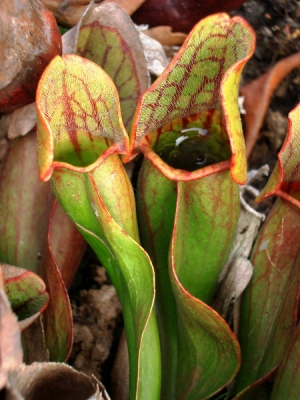
Pitcher plants usually conjure up visuals of unsuspecting insects falling into a watery grave. But did you know these insectivorous plants also offer a fascinating story on a mutually beneficial relationship in the wild?
A place for roosting
One variety of pitcher plant that grows on trees in Brunie’s Borneo gladly welcomes a type of woolly bat to safely roost in its pitchers. And how is this mutually beneficial? Because, the bat droppings provide the pitcher plant much-needed nutrients. Since this plant dwells on trees, its chances of trapping insects are said to be lower than those of its cousins that grow on the ground. A study indicated that as the bats roost in the safety of the pitchers, the plants get about a third of their nutrients in the form of nitrogen from bat droppings. Of course, it certainly helps that this variety of plant has large pitchers, less digestive liquid, and more importantly, some sort of a “girdle” mid-way that prevents the bat from slipping and falling into the fluid. Interestingly, these bats use only this specific variety of plants for roosting. A subsequent study revealed that the back wall of the pitcher “strongly reflects incoming ultrasound in the direction it come from, and over a large area”, helping the bat locate these plants from far.
Not just bats
There are a few other pitcher plant species too that welcome such small mammals. For instance, one variety of plant tempts tree shrews with nutritious nectar on the pitcher’s lid. But there’s a catch. The shrews will be able to lick the nectar only when “they position their backsides over the mouth of the pitcher”. The pitcher plant offers nectar and, in return, expects nutrient-rich shrew dropping! Occasionally though, a shrew falls to its death in the pitcher fluid.
Picture Credit : Google




